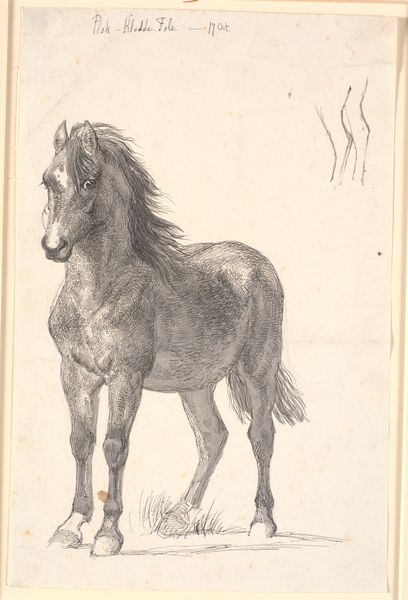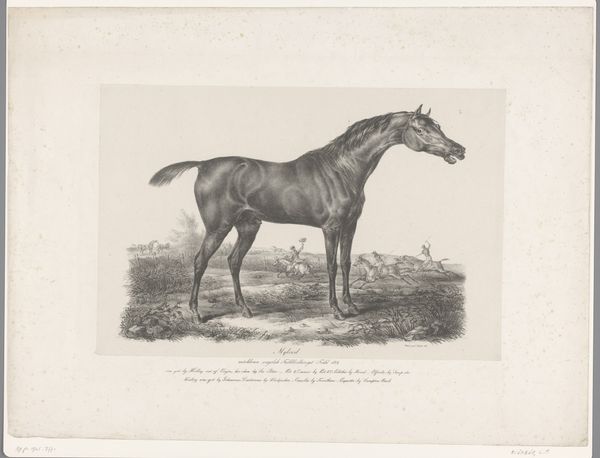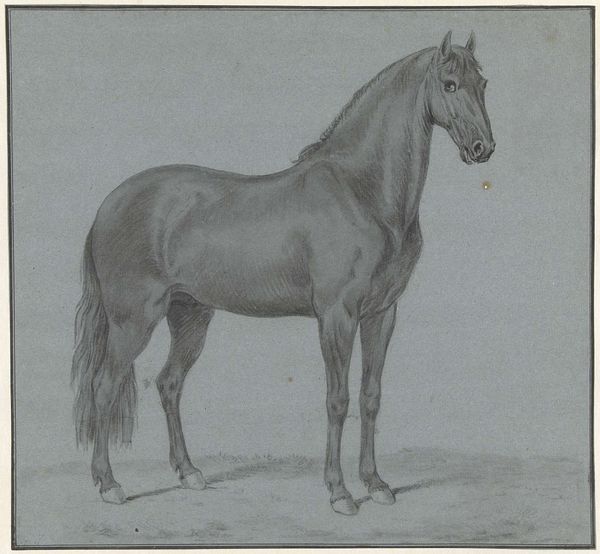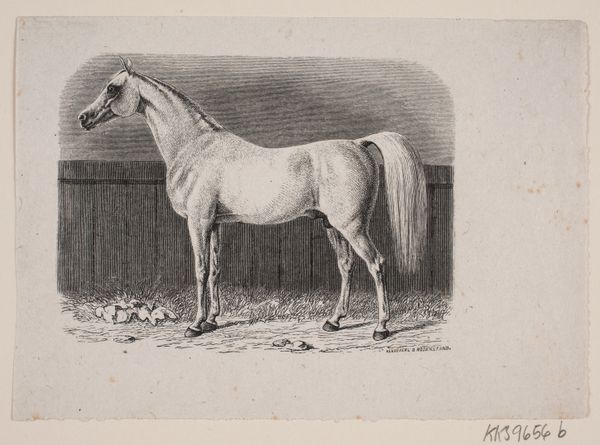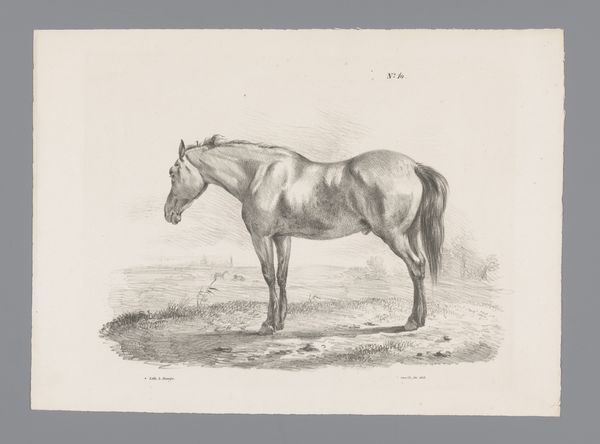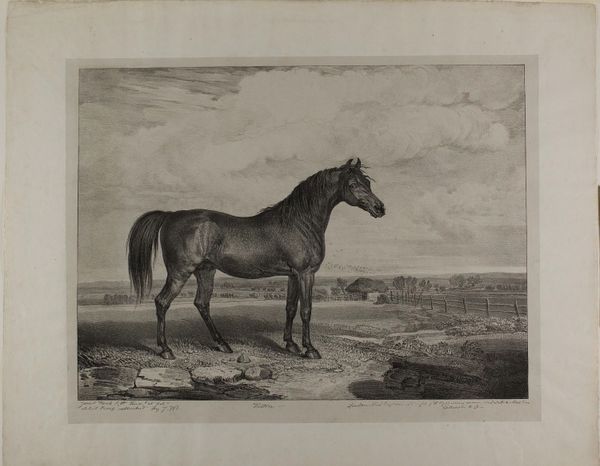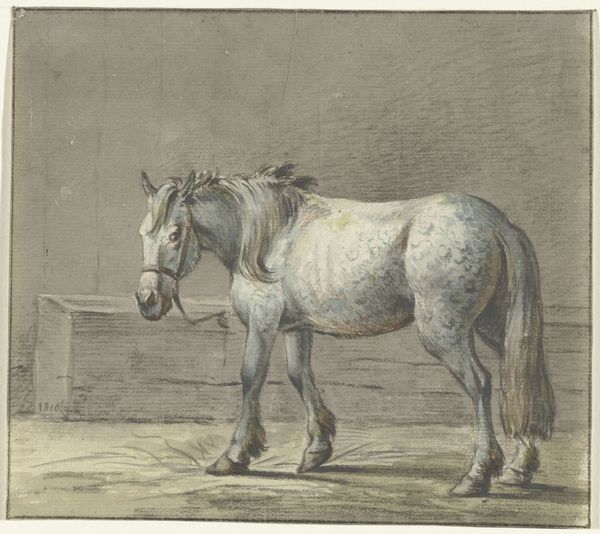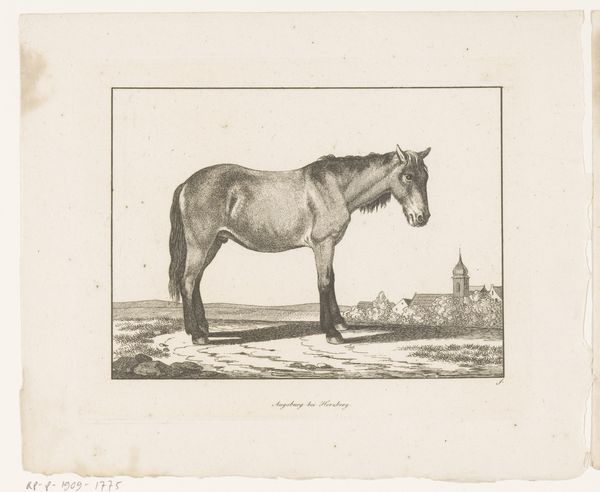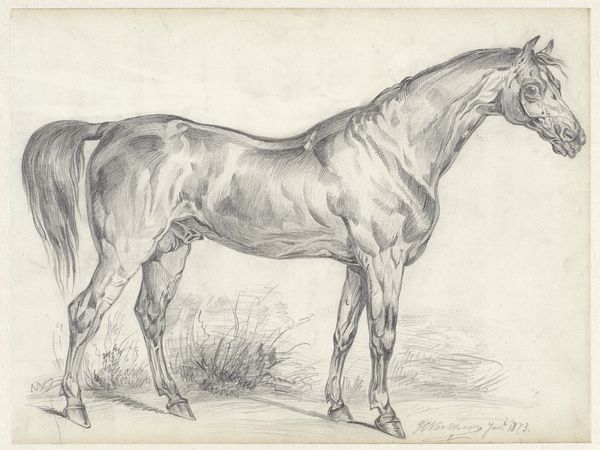
#
vegetal
#
pencil drawn
#
light pencil work
#
pencil sketch
#
pencil drawing
#
horse
#
pencil work
#
imaginary surrealistic
#
remaining negative space
#
imagination
#
fantasy sketch
Dimensions: height 155 mm, width 209 mm
Copyright: Rijks Museum: Open Domain
Editor: So, here we have "Study of a Horse" by Victor Adam, likely created sometime between 1811 and 1866. It's a pencil drawing, and the detail is just incredible. The pose makes it seem very powerful and full of movement. What captures your attention in this piece? Curator: What intrigues me is how the artist uses the horse – an age-old symbol of power, freedom, and even nobility – and yet seems to subtly question that established narrative. Consider the way the light falls, almost highlighting a vulnerability, particularly around the joints and the eye. Does this refined approach diminish the symbol or add nuance? Editor: That’s a really interesting point! I hadn't considered the element of vulnerability. I mostly saw confidence and maybe even dominance. Do you think that another horse faintly sketched in the background offers us another interpretation? Curator: Precisely! The smaller, fainter horse in the background can be viewed as a comparison, highlighting aspects of breeding, domestication, and perhaps even the loss of the horse's 'wild' spirit. In many cultures, the horse is linked to specific societal structures and status. Editor: So, the sketch might be inviting us to consider how culture and social position has shaped the perception of horses? Curator: Absolutely! And more broadly, it's inviting us to explore how these symbols influence our understanding and how historical or personal perspectives change the understanding of a familiar object. It’s quite subtle. Editor: That’s a new way for me to think about art, actually! Not just what's depicted, but the way it manipulates common meanings to explore culture and societal issues. Curator: Exactly! That constant interrogation of cultural memory and visual symbols, I find endlessly rewarding.
Comments
No comments
Be the first to comment and join the conversation on the ultimate creative platform.



